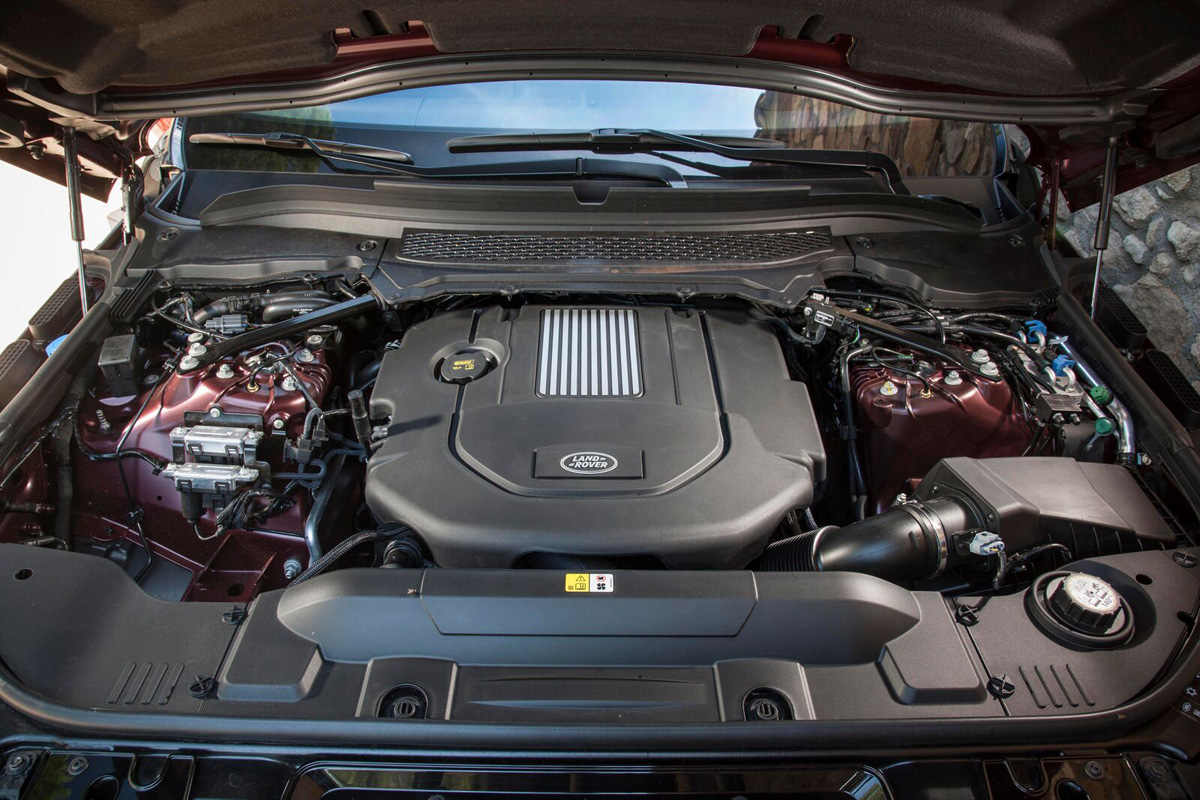Test Drive: 2016 Range Rover Sport Td6 and Range Rover Td6
Behind the wheel of Britain’s most deluxe diesel in the Spanish countryside

It makes sense to test drive Land Rover’s all-new Td6 diesels in the land that Torquemada, the Grand Inquisitor, once held in his terroristic grip. After all, “putting the screws” to people was his specialty, and torque is literally twisting force. When you have a 4,707-pound vehicle to move around the Spanish countryside—specifically, around the grand estate of Le Comes, where Popes once came for respite—more torque is a good thing. Never fear: no blood was spilled while we drove these luxurious beasts over rock slopes, through soupy quagmires of mud, and deftly down boulder-strewn slopes. We were simply enjoying the benefits of more torque.

It helped that the test rigs, both the Range Rover and Range Rover Sport, came equipped with optional All-Terrain Progress Control, which debuted on 2015 gasoline models. ATPC works through the traction-, stability- and cruise-control systems; drivers adjust speed by dialing it in via the cruise control (from 1-19mph) and leave the pedals be. All you have to do is steer. It feathers the throttle on climbs over boulders, sending power to any of the four wheels with grip, grabs any single wheel with the brakes to prevent slip, and allows careful control on super-steep, double-black-diamond descents of rock, dirt and muck.
We had spotters to point out obstacles and help with approach and departure angles as we tooled around Le Comes, an official Land Rover Experience school, and that meant we could drive over hazards with less worry, but considering we were doing all of this on the same street tires we drove on to bomb up the twisting asphalt in the shadow of the Montserrat massif, the diesel RRs proved all the more impressive.

Standing beside a Range Rover Sport Td6 at idle, as the mercury crested 100F, there’s just the slightest bit of clatter. It’s clearly no gas engine, but then again, sitting inside—where cooling seats wicked away the sweat accumulated from photographing the Rovers under the beating sun—you can’t hear any difference between the gas and diesel editions. Land Rover added sound-deadening to the firewall, and further quelled any sound penetration with double-insulated glass. Plus, these are truly state-of-the art engines; with 29,000-PSI direct fuel injection that ensures an exceptionally clean burn, and urea injection to sweep away particulate emissions. More to the point, diesel engines naturally produce increased torque at lower rpm, so the new Sport and Range Rover V-6 delivers peak output (440 lb. ft.) at a mere 1,750 rpm. That’s 108 more lb. ft. than from the supercharged V-6 gas edition, and since peak output is so quick from idle, the engine doesn’t have to work nearly as hard to maintain driving force.

On blacktop we loved that steam-train push—especially since the RR and Sport with the Td6 are geared to spin at very low revs (at 70mph you’re barely turning 1,600rpm); if anything, that means the cabin is actually quieter on the highway than the gas-engine V-6 or V-8. Now plant the gas and you’re already by laggard right-lane prey, overtaking quickly and safely.

You might not guess it, but both models are actually slightly lighter than the gas V-6 and a full 300-plus pounds svelter than the V-8 editions—and vs the latter, you’re looking at a more than 50% gain in fuel economy (22 city, 29 highway for the Td6 vs 14/19 for the V-8). Even against the supercharged V-6, there’s a 32% increase in efficiency. You may miss the massive, 461 lb. ft. of torque from the V-8, but we doubt it. The upcharge is modest as well—$1,500 for the Td6 over the supercharged V-6: The Range Rover Sport Td6 starts at $66,450, and the Range Rover Td6 starts at $86,450. Both cars will be on sale mid fall.
Interior images courtesy of Range Rover, all others by Davide Miguel












